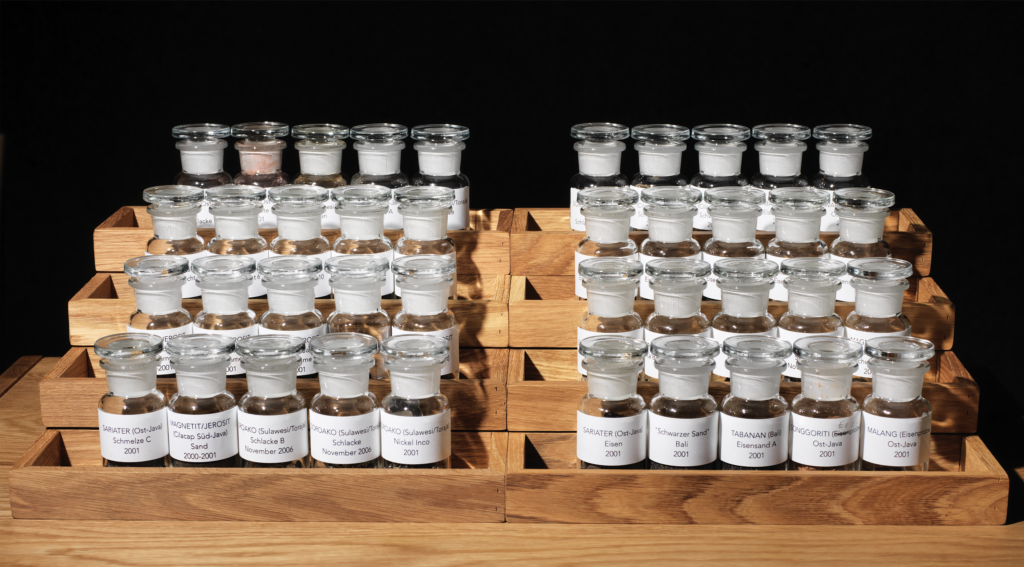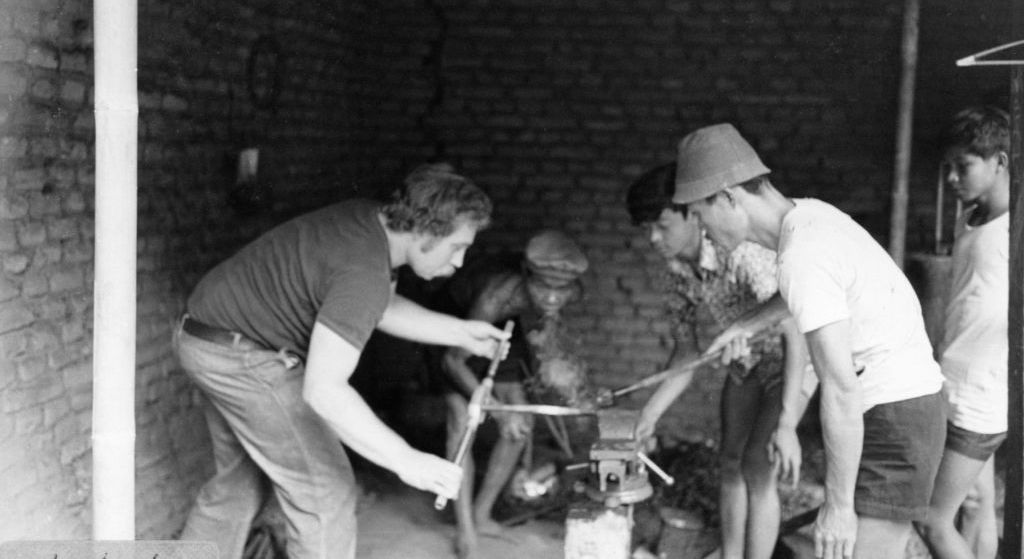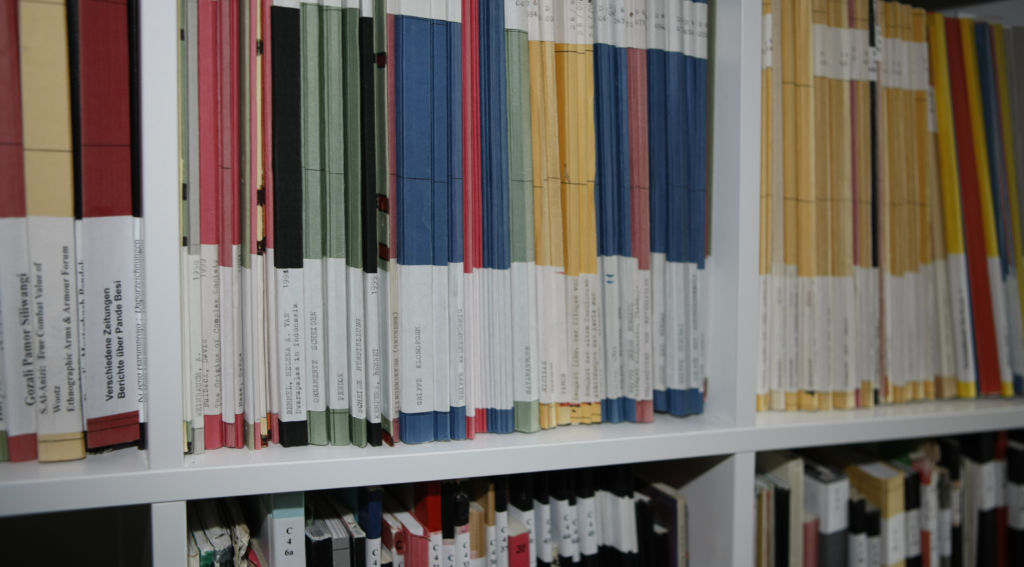Dietrich Drescher’s material samples
During the years of 1997 to 2006, Dietrich Drescher produced iron from open ore deposits in Central Indonesia in the traditional pit and clay furnaces. First, he got access to the University of Bandung and compiled a list of important ore deposits in Java, Sulawesi and Bali, that presumably were already known and explored in pre-colonial times because of easy access.
The cultures of Southeast Asia are historically known for forging and mining since the early historical times. Some references even speak of the high quality of blades in the archipelago, often surpassing the workmanship of European trade blades and weapons. Large slag deposits in Santubong, Borneo, even speak of iron trade with China, Thailand, and Cambodia since in the first centuries A.D., being combined with beads and ceramics as indicators for far-reaching trade exchange on a large scale.
Iron melting and forging on a high level is especially applied to the keris, called “the finest of all weapons of Asia” by Portuguese visitors in the 16thcentury, displaying blades “made of the finest steel” referring to Ma Huan, an emissary in the time of Admiral Zheng Ho, and to the mandau of Borneo. Also, the blades traded by Buginese and Makassarese merchants, known in the whole archipelago, have a well-known reputation because they were presumably made by Eastern Toraja smiths. The highly elaborate blades of the Acehnese warriors are also of major importance.
Melting and forging is an eminent part of many of Indonesia’s cultures. It also has an inherent symbolic and cosmological meaning, being linked with transformation processes of ancestral souls. In the keris, even materials of different sources are combined to elaborate pamor that refers to the forging skills of the smith and the magical powers of the blade.




